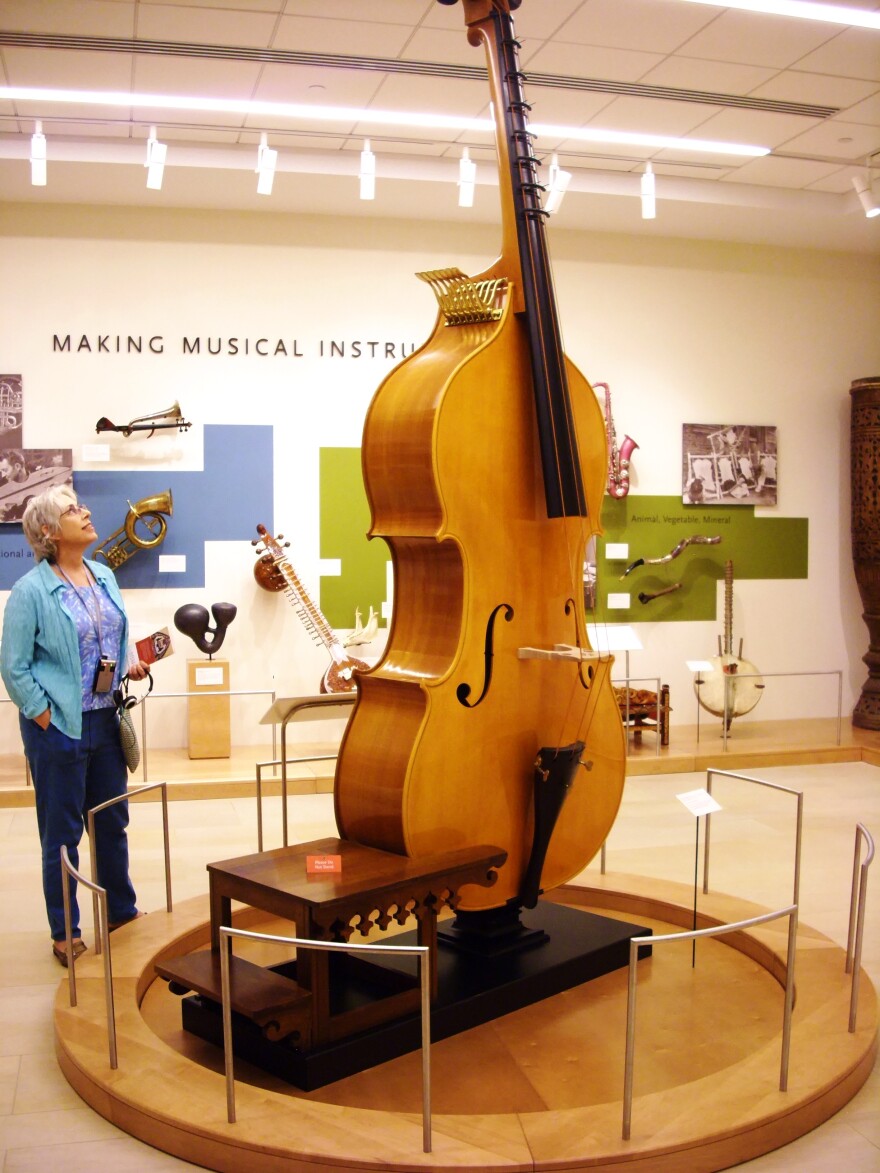It depends. Just like the old question about a tree falling in the forest, there is an instrument which, even if you ARE there to hear it, you may not. For that matter, you may not WANT to hear it.
Jean-Baptiste Vuillaume was a gifted French luthier who built over 3,000 instruments. At one point, he began making reproductions of old instruments, many of which were indistinguishable from the originals. At one point, he decided he wanted an instrument which could ad a "low-end rumble to a large orchestra."
With that idea, the octobasse was born.
With a name like octobasse, you might expect it to have eight of something. While you'd need to be eight feet tall to have any hope of playing it as you would a double-bass, the closest the massive instrument comes to eight of anything is seven levers mounted on top of the body of the instrument. At 11 feet 5 inches, the octobasse is nearly twice as long as a double-bass, which stands around 6 feet 5 inches. The size also means it's impossible to finger the instrument in normal fashion...hence, the levers. They are used to operated various "fingers" which change the pitch of the massive strings.
There are two of Vuillaume's three original instruments in existence, plus two playable replica's. Classical 101 Program Director Beverley Ervine and I actually had the opportunity to see one of them at the Musical Instrument Museum in Scottsdale AZ. When you first lay eyes on it, you can't help but stare and chuckle. Little did I know that the inventor was serious when he built it.
Then there's the bow. The bow is so thick that it seems it would take the tennis backhand grip of Serena Williams to hold it.
Here, members of the Philharmonie de Paris demonstrate that it CAN be played.
https://www.youtube.com/watch?t=37&v=9BSs3FYQm5E
Below, you'll see Colin Pearson, curator of the Musical Instrument Museum, give you a guided tour and demonstration of Vuillaume's musical elephant-in-the-room. After hearing it, I felt as though it's only practical application might be the opening to Also Sprach Zarathustra. If Stanley Kubrick had seen this, not only might we have heard it in his film 2001, A Space Odyssey, the apes might have been throwing things at the octobasse, instead of the monolith.
https://www.youtube.com/watch?v=12X-i9YHzmE

